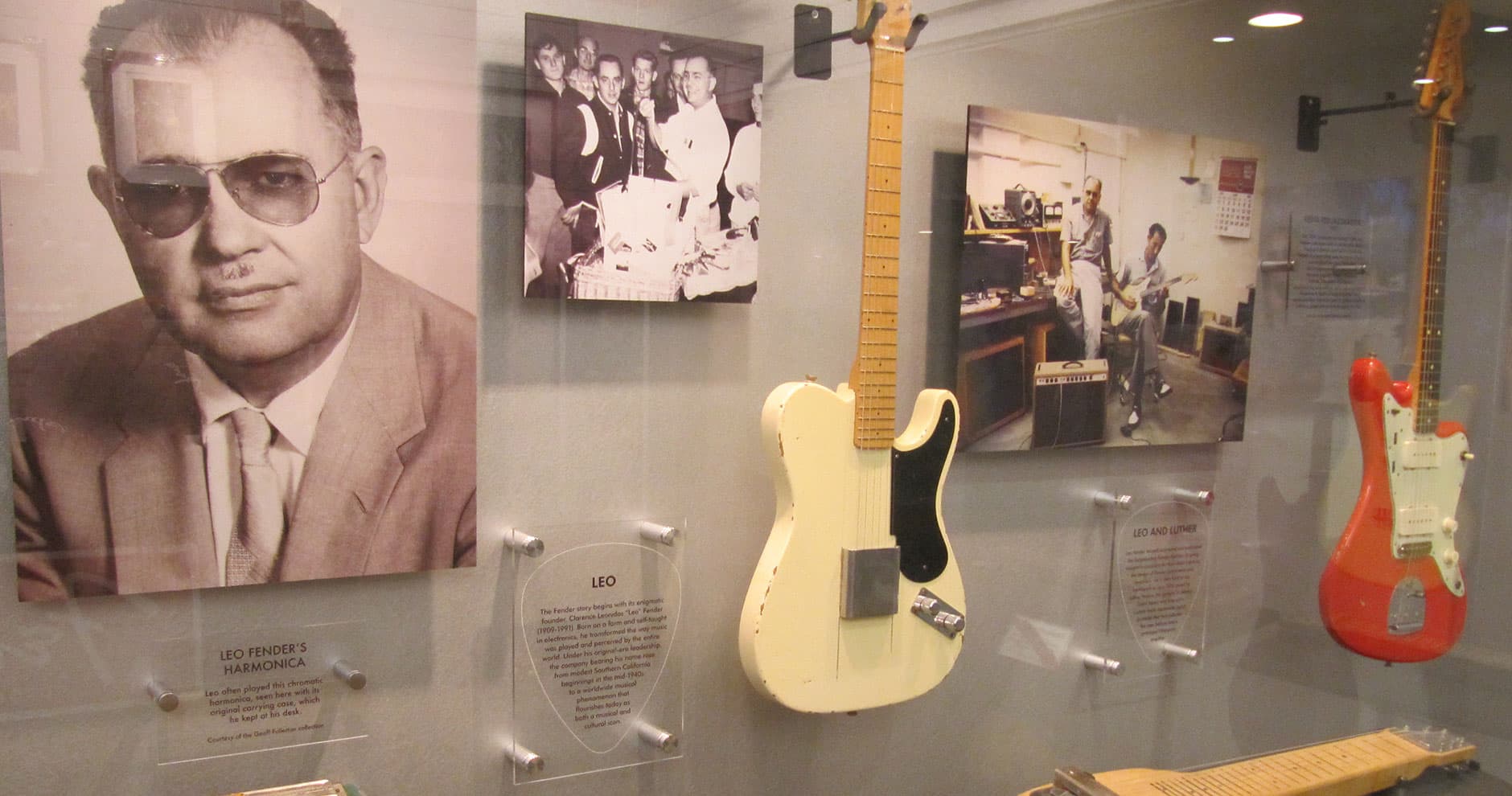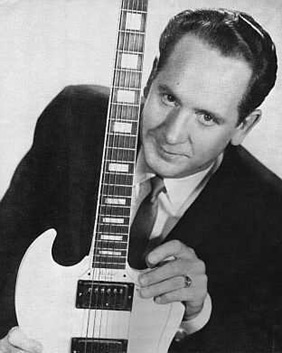In the 1940s, Leo Fender and Les Paul worked together on the development of an electric guitar to release to the public. Fender would go on to start his own company and release the Telecaster, which was famous for its affordability due to Fender’s implementation of an assembly line manufacturing style in place of building each instrument by hand from scratch.


“Fender’s revolutionary invention was the bolt-on guitar neck which enabled cheap mass production and also allowed players to easily repair and modify their own instruments” (Chilton 238). It was new, it was customizable in both looks and sound, it was cheap, and therefore its popularity skyrocketed during the rock ‘n roll era.
While brands such as Gretsch and Rickenbacker debuted their own solid bodies here in the US, in addition to the release of guitars from Japanese brands such as Yamaha and Ibanez, Fender and Gibson were easily the segment leaders.
Due to the staunch competition Gibson and Fender presented to each other, neither manufacturer was able to sit on their laurels. Fender released a tweaked version of their Telecaster, named the Stratocaster, in the latter half of the 1950s, and Gibson updated their famous Les Paul with the release of what would eventually be named the Gibson SG (due to Les Paul requesting his name being taken off the instrument).
The result was that the market was full of reliable, high quality and great-sounding instruments at a reasonable price that was affordable for even lower-class Americans. Chilton discusses the effect of Fender’s “Model-T” style production line, explaining “[this production method] previously inaccessible items that assembly line-style production were made available to a growing middle-class” (Chilton 238).
Today’s electric guitar market climate, however, isn’t as promising at first glance. Fender and Gibson are both in debt, which even led to Gibson filing for bankruptcy in 2018. Hip-hop/rap continue to be a dominating force in American popular music and is a genre that incorporates very limited use of the instrument, especially when compared to the guitar-driven music of the latter 20th century.

However, the numbers surrounding guitar sales can be a bit misleading; take, for example, Gibson’s struggles of the 21st century. Amy Wang of Rolling Stone shows that most of their financially difficulty has been a product of poor business ventures outside of their core instruments, saying “Gibson’s bankruptcy reflects much more on internal missteps than the health of the broader guitar industry…Gibson took on an audio and home electronics business that saddled them with debt” (Wang). In reality, Gibson’s decisions concerning their guitars have played a role in their troubles as well. Kevin Harding believes that “They’ve probably over-extended themselves.
One of the criticisms of Gibson is that they’ve become less interested in making guitars for musicians and instead are making boutique models… They developed instruments that tune themselves, and all kinds of silly stuff.” When considering the over-saturation of the market which now features guitar builders around the globe who can make quality Fender and Gibson copies, it’s easy to see why guitarists have chosen to forgo an American-made Gibson that requires a much higher price tag.
In the past two years, electric guitars have been on an upswing in sales, according the Wang. Also, acoustic guitar sales have remained strong for decades, likely due to the continuing popularity of mainstream genres like country and Americana. In short, it isn’t likely that the “guitar era” will be concluding any time soon. As STL Today notes, popular guitar driven bands continue to harken back to the techniques used by the first rock ‘n rollers to establish the instrument’s initial popularity, while also evolving new ideas which will help connect the style of music to the new generation.
Summarizing Kevin Harding’s Thoughts –
Kevin Harding outlined the main differences, and his preferences on which builder he prefers: “The Gibson has a soft neck and fingerboard, and an ultra-dense heavy body. It didn’t provide much feedback because the body is so hard and doesn’t absorb energy. But it does have tons of sustain. The Fender is kind of opposite: Leo’s thing was a super hard fingerboard and neck, which gives a biting attack, and a softer, absorbing body. The sound decays like an acoustic guitar, and you feel the vibrations.” He explains his preferences for a Fender solid-body and a Gibson semi-hollow.
The competition between these two manufacturers led to higher quality instruments at an affordable price, meaning that guitars got into the hands of a wider range of aspiring players. Recently, however, both companies have been in financial ruin. Harding believes that most of this is due to the companies outgrowing the market, but there are other factors that likely play a role. Guitarists have recently been frustrated, Harding explained, by the sky-high prices of Gibson guitars, and their focus on gimmicky new features such as self-tuning and coil-tapping pickups. Also, the presence of many more alternative guitar makers is now taking up a share of the market, frequently offering decent Fender and Gibson replicas for a lot less money. It’s evident that the struggles of Fender and Gibson aren’t indicative of the market as a whole, however.
As Amy Wang of Rolling Stone explains, “Guitar sales in multiple markets are on the rise… there’s little to indicate that the guitar’s reign is over – and there might actually be more to show the opposite” (Wang). While it may seem fair at first glance to claim that “the electric guitar is dying”, similar to the trajectory of the jazz and rock genres, there are many factors that play into Fender and Gibson’s struggles other than simply a loss in popularity. Harding defends the future of the guitar, explaining, “You can play music from all over the world on it, so I’d imagine it will continue to adapt and be relevant. Also, it is portable and affordable.” So, while its dominating presence in popular music may be declining a bit with the rise of hip-hop and electronic music which don’t utilize the instrument as much, plenty of genres, even mainstream genres like country and alternative, still showcase the guitar/electric guitar.